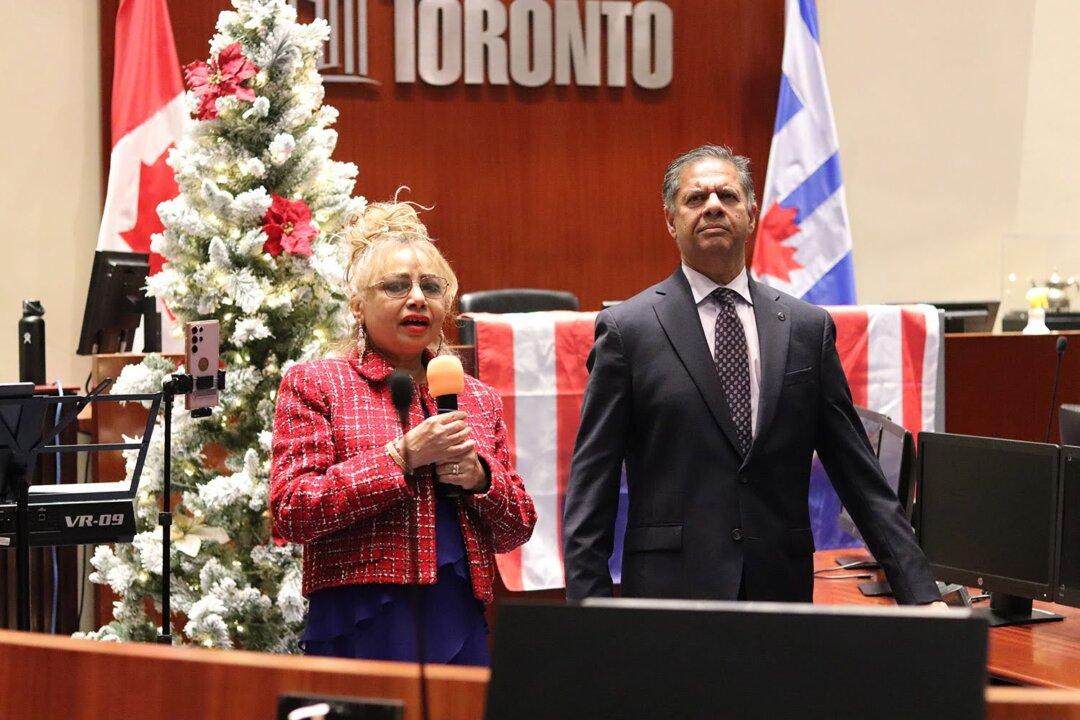The Canadian Armed Forces are preparing to fight an invisible enemy. As many as 24,000 members could be engaged against the CCP virus, doing everything from delivering supplies to helping enforce quarantine orders.
“We will be there. We’re ready to help,” Defence Minister Harjit Sajjan said at a press conference March 30.
Sajjan gave three directives to Chief of the Defence Staff Gen. Jonathan Vance: slow the virus; support vulnerable communities, especially the Indigenous and northern ones; and preserve the forces’ ability to assist with fires and floods.
The Epoch Times refers to the novel coronavirus as the CCP virus because the Chinese Communist Party’s coverup and mismanagement allowed the virus to spread throughout China and create a global pandemic.
Regular members, reservists, and rangers have been put on the ready for what could be the greatest response at home since the Quebec and Eastern Ontario ice storms of 1998.
At the discretion of Ottawa, the forces could be asked to come alongside provincial, federal, or municipal efforts. Military brass are considering both short- and long-term scenarios.
“These forces will be organized down to individual level into task forces able to deploy by sea, road or air to where they are needed,” Vance said.
Retired vice-admiral Bruce Donaldson, who was vice-chief of the defence staff, said the forces could help if the health system is overwhelmed by cases of the CCP (Chinese Communist Party) virus, commonly known as the novel coronavirus.
Donaldson said troops could also lend a hand to build or convert facilities for emergency uses if need be.
“This is a particularly difficult and really tricky set of responses they’re looking to calibrate,” said Dave Perry, senior analyst and vice president with the Canadian Global Affairs Institute.
“This is not just a health crisis but it’s also an economic catastrophe. If there are commercial options available, [it’s] probably not a good idea to use the military if there’s another safe and reliable way of doing it.”
The forces are helping the economy in Halifax by sequestering in a hotel the crews of HMCS Moncton, HMCS Ville de Quebec, and a helicopter air detachment. Perry calls it a “smart” move “to keep those crews sequestered so they can go to sea as confident as they can be that they’re healthy.”
Alain Parent agrees. The retired general who was Vance’s vice-chief of staff until 2018, says “The first thing is protect the force, and by protecting the force what they mean is they need to stay healthy.”
Two-thousand test kits for the CCP virus have been distributed to military clinics across the nation. Vance expressed some concern that members of the military will contract the virus, “potentially threatening the integrity” of some units.
More than 7,000 Canadians have contracted the virus, though 1,100 have already recovered. But a sick military would magnify the problem they’re trying to solve.
“When they start moving all over the country lending a helping hand, they may actually bring with them infection that we’re trying to prevent,” explains Donaldson. “So you have to be very careful how that is done.”
As of March 20, only three Canadian Armed Forces members were infected, but no updates have come since.
“This is information we don’t want opposing forces to have as we’re relatively a small force,” said Department of National Defence spokesman Dan Le Bouthillier at the time.
The Canadian military has little fat to spare. Upcoming training exercises had to be cancelled—ironically to ensure its preparedness.
In mid-April, the HMCS Glace Bay and HMCS Shawinigan will return early from scheduled exercises near African shores. Exercise Maple Resolve was slated to take place in Wainwright, Alberta, in May but was cancelled, freeing up 1,450 pieces of equipment and 5,000 personnel for other purposes. Two-thousand forces will remain abroad, mostly in Ukraine, Iraq, or Estonia.
In Italy, the military has helped manufacture medical equipment and transport the dead. More than 11,000 there have died from COVID-19. As of April 1, Canadian deaths numbered 101.
The worst the military could face in Canada would be public disturbances, but Vance does not expect this to occur.
“We are not considering that right now. We don’t need to,” he said. “As soon as you mention military during a crisis people think troops with guns and weapons. People need to see this response as more akin to a humanitarian response.”
Perry says people also need to temper expectations.
“We’re not the United States military. We don’t have giant hospital ships, as an example. We don’t have an army corps of engineers. We don’t have a big reserve medical capability in the military. So trying to figure out what they could usefully do is probably not as easily apparent as people might think.”





